Introducing the Case
- Goal: to discuss background, issues, and coping strategies in connection with being a third culture individual.
- Case:
- An African American woman (M.) from Montgomery, Alabama.
- Third culture: daughter of a deaf mother (primary caretaker) (Sue & Sue, 2016).
The complex experiences of third culture individuals are a feature that a culturally competent counselor needs to consider. The goal of this presentation is to discuss a particular case of a third culture individual with attention paid to her background, issues and coping strategies, as well as the impact that being a third culture individual has had on her. The discussion will be devoted to an African American woman who will be called M. from now on; she is a daughter of a deaf mother and is currently in charge of taking care of the aging woman. As pointed out by Sue and Sue (2016), disability is associated with particular experiences that are important to take into account for a culturally competent counseling specialist. A child of a deaf parent would be familiar with such experiences since childhood while also not fully belonging to the same group; they would be used to the experiences of people with and without disabilities. Thus, M.’s background qualifies as one of a third culture individual, and her case can be used to study the topic.

Psychosocial Background, Family History
- Race/ethnicity: African American.
- Family: single mother and two siblings.
- The siblings are much older (moved out before M. was born).
- M. grew up with her mother; currently lives with her and provides care.
- M. was taught sign language; very good at it.
M. points out the impact of her race on her experience, which is why it is important to note once again that she is African American. She is the daughter of a single mother who has a disability; specifically, she is deaf. In addition, M. has two siblings, but they did not interact much throughout her childhood because the siblings were significantly older and had already moved out by the time M. was born. M. was raised by her mother and still lives with her because the woman developed health problems. M. is fluent in sign language and takes care of her mother now.
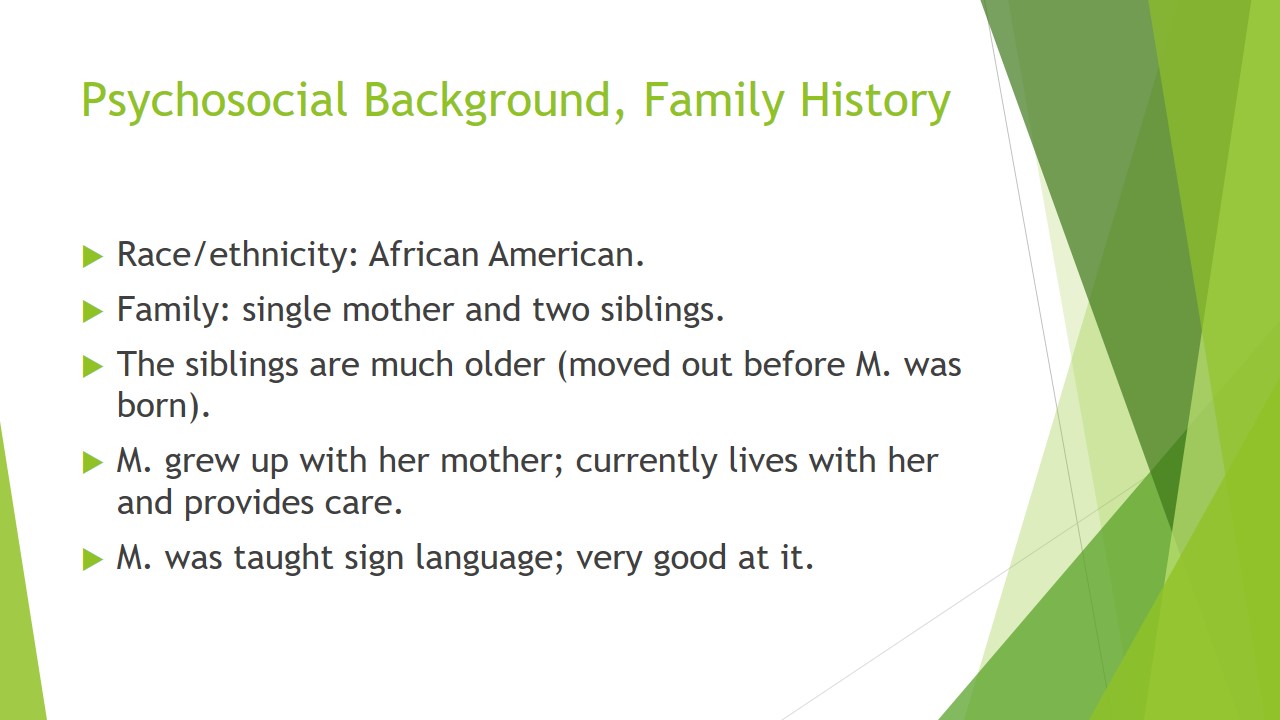
Personal and Interpersonal Relationships
- Relationship with the mother:
- M.A. is the primary caretaker. M.A. feels dissatisfied and stressed by the role.
- Very strong emotional attachment to her mother conflicts with the dissatisfaction.
- Relationships with siblings: strong negative emotions (abandonment, resentment; views the current arrangement as unfair).
M. has a very loving and caring relationship with her mother, but since M. is her primary caretaker, she also feels stressed by the role and its responsibilities. She experiences a conflict between loving her mother and being tired and dissatisfied as her caretaker. As a result, she has grown to resent her siblings; M. thinks that they had abandoned her and their mother when they were supposed to help them.
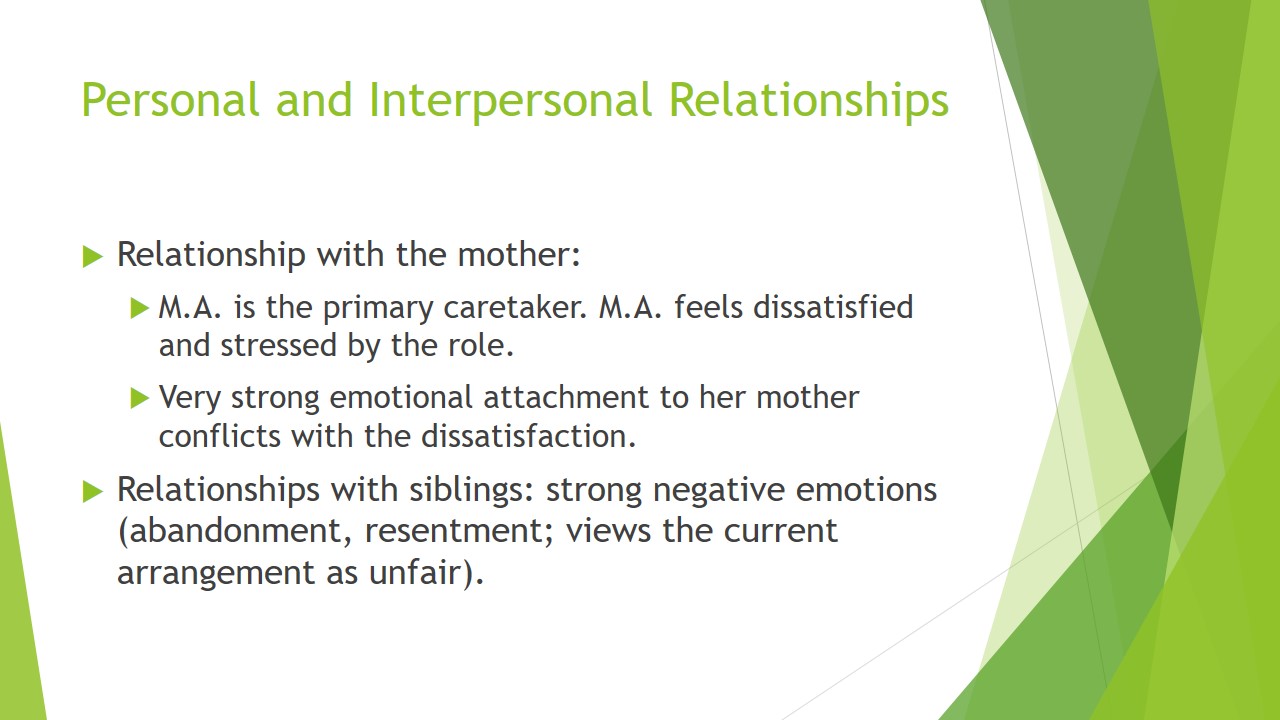
Presenting Issues and Coping Strategies
- Primary presenting issues:
- Family conflicts (negative emotions toward siblings).
- Stress (due to taking care of her mother).
- Coping strategies:
- Blaming others (her siblings).
- Self-blame: shames herself.
- Repression and avoidance: distances herself from siblings; represses her dissatisfaction with care-taking.
M.’s presenting issues include the family problems, especially as connected to her relationship with her siblings, as well as the stress associated with caring for her mother. Her coping strategies are not particularly healthy; while she does blame her siblings for not being helpful, she also exhibits very significant levels of self-blame. Other than that, she prefers to repress her feelings and avoid her siblings to prevent being frustrated and angry at them.
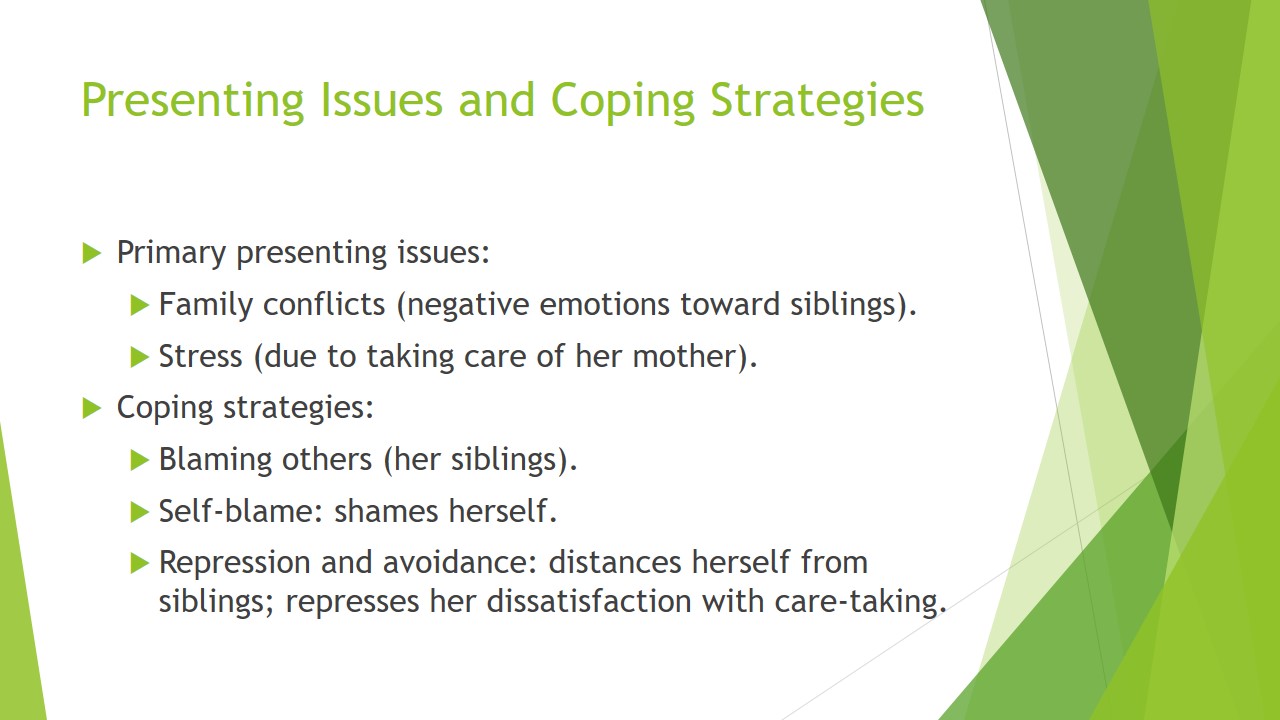
Issues Related to Being a Third Culture Individual
- Discusses the impact of prejudice against race/disability. Common for minorities (Sue & Sue, 2016).
- Overprotective: a core belief that non-family members are not qualified to care for her mother (lack the understanding of deafness).
- Feels responsible for her mother; leads to self-blame, self-disgust, stress, negative emotions toward siblings.
- Supportive relationship: a resource to be leveraged?
M.’s presenting issues may have been affected by her being a third culture person. She openly discusses the instances in which her mother and herself experienced prejudice related to her mother’s disability and their race; ableism appears to be the predominant theme. As pointed out by Sue and Sue (2016), it is very common for people with disabilities to become the target of discrimination and prejudice. These experiences led M. to be, in her own words, overprotective of her mother. In addition to that, a core belief was uncovered during the interview; specifically, M. does not believe that people who are not a part of her mother’s family would be qualified to care for her because they would act ableist even without meaning to due to insufficient understanding of deafness. These beliefs and experiences appear to have made self-blame and sibling-blaming into her primary coping strategies; also, her feeling responsible for her mother and angry at her siblings adds to her stress. However, a loving and supportive relationship with M.’s mother might also be considered an important resource for the improvement of her well-being. Therefore, while this presentation focuses on multicultural issues, it is essential to remember that various culture-related factors can also become positive features for a counselor to leverage.
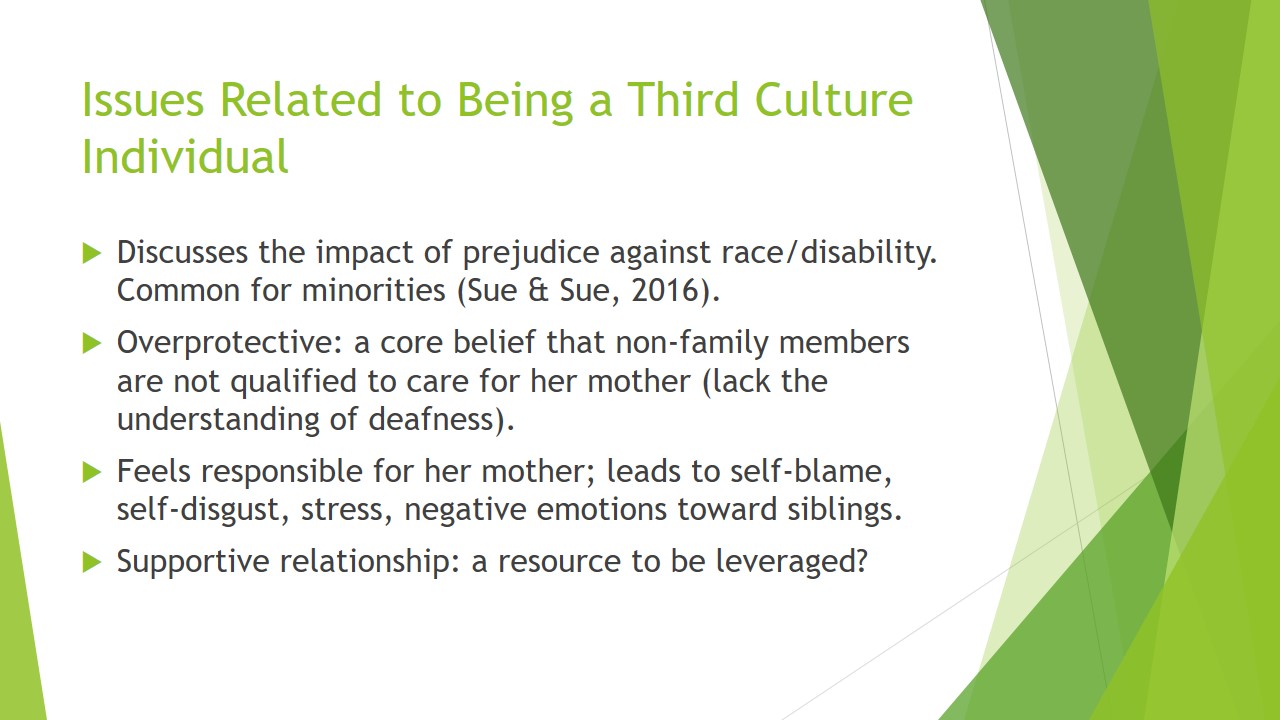
Conclusions
- Cultural factors, especially prejudice, are among the ones that affected M.’s psychological well-being.
- A counselor needs to be culturally competent to recognize these problems/find resources for M. to use.
Thus, it can be concluded that the specifics of M.’s experience, especially as related to the prejudice toward people with disabilities, have affected her core beliefs and coping strategies and worsened her presenting issues. The understanding of these issues within the context of diversity can help a counselor to recognize the concerns and equip M. to use the resources that her background provides.
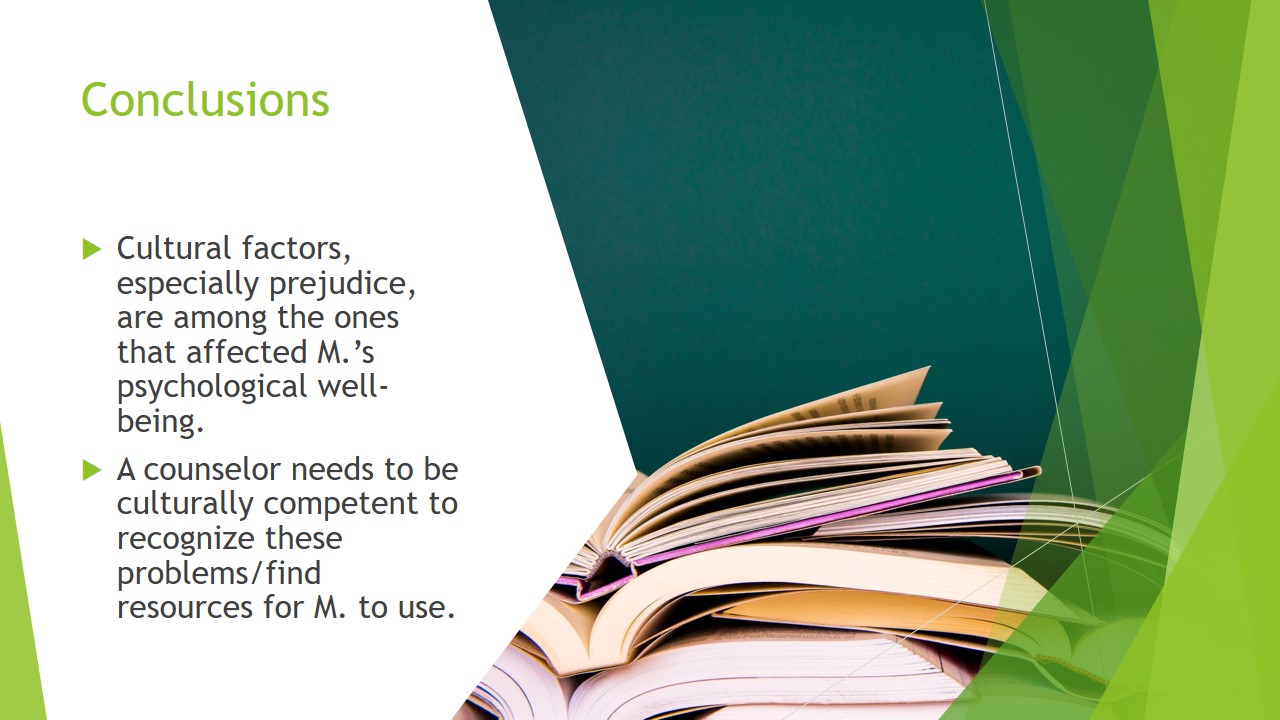
Reference
Sue, D., & Sue, D. W. (2016). Counseling the culturally diverse (7th ed.). Hoboken, NJ: John Wiley & Sons, Inc.